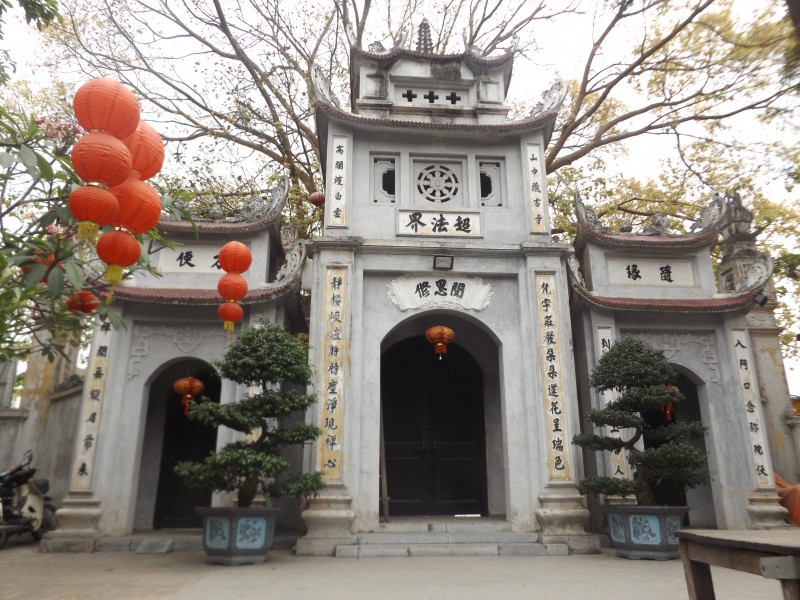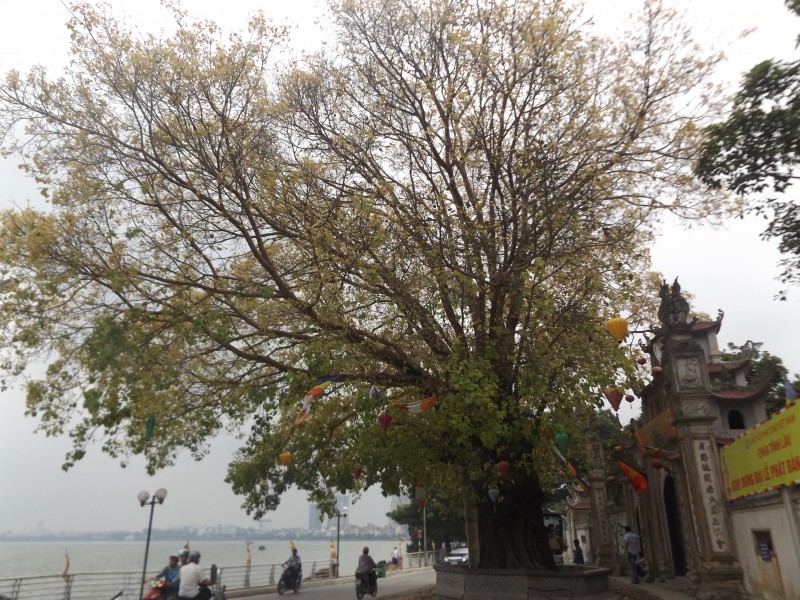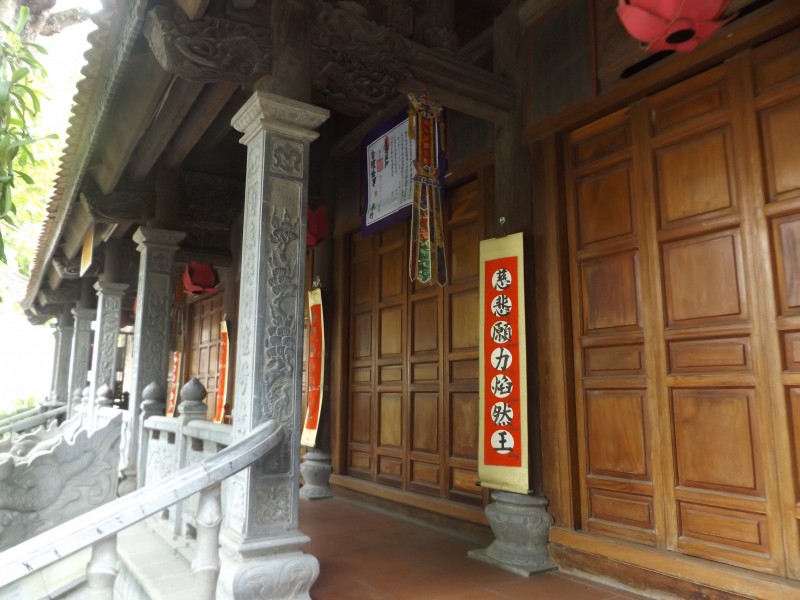According to legend, Tinh Lau Pagoda is located on a high ground at the end of Ho Khau village (Mouth of the lake), the main face of the main hall looks towards the Red River in the east-north direction. Under the Le dynasty, this place belonged to Quang Duc district, Phung Thien palace, Thang Long citadel. Legend has it that at first there was only a small temple to worship the kings and nobles of the Ly dynasty, later it became a temple to worship Buddha. Because it is under the care of monks, it is also called “Sai” pagoda, gradually the villagers call it “Sai” pagoda.
 |
| Ancient Tinh Lau Pagoda is located on the banks of West Lake |
According to the epitaph left behind, in the year of the Horse Horse (1618) when Ha Dong had a great drought, the government officials under the orders of Lord Trinh Tung went to the temple to pray for the island to be inspired. In the year of Canh Than (1620), Trinh Tung went down to ban gold and silver and recovered 10 acres of incense land from the village temple that had been appropriated by some powerful people to return it to the two pagodas Chuc Thanh and Thanh Lau.
The pagoda used to bear the name “Thanh Lau Tu” for more than two centuries, on the temple bell cast in the 7th year of Canh Thinh (1799) and the post-built stele in the 6th year of Thieu Tri (1846) are still engraved with the same name. . But on another stele stating the temple’s renovation in the 14th year of Tu Duc (1862) was replaced with the word “Tinh Lau Tu” and that name is used to this day.
Today, the temple is located on a large campus surrounded by many ancient trees. In front of the pagoda is West Lake, the pagoda also has a Bodhi tree symbolizing the enlightenment of Buddhism, that’s why the ancients considered this as the most scenic spot of Hanoi.
 |
| Right in front of the temple gate is the Bodhi tree symbolizing Buddha’s enlightenment |
Inside the Tam Quan, there is an unusually quiet and airy space, just like the introduction in the couplet sentence in front of the temple: “Ho Thuong Tinh Lau Thuy Truc, Hoang Hoa Giai Buddhist / Mon money, Stone Phat, Truong Tung, etc. “The temple of Tinh Lau above has a beautiful bamboo lake, yellow flowers are the realm of Buddha / The place of worship in front of the door has old pine trees, green grass, that’s the place of true cultivation).
The pagoda has an ancient architecture, the main hall is structured in the style of a nail, including five front halls and four harem compartments, with three long steps, two sides are co-pillars with parallel sentences, and solemn clams. and ancient. Attached to the five front halls is the upper hall – the place to worship Buddha and Bodhisattvas.
 |
| The temple has its own unique architectural features that few places have |
The pagoda is roofed with roof tiles in the ancient architectural style, the roof banks at the two ends of the pliers are covered with two square marks. The front of the pagoda is opened by two copper pillars connected to the gable wall of the front hall, on the top of the bronze column is covered with a pair of Nghe in adoration to show the purpose of examining people’s spirituality before entering the meditation door. .
Today, Tinh Lau pagoda still retains valuable works of 17th century art style, especially the Cuu Long building of the temple is made different from other Cuu Long buildings with the shape like a real umbrella. is a unique work of art. Other statues are elaborately crafted, with elegant lines, are works of Buddhist art and inherit the style of standard statues of the 16th and 17th centuries.
Three statues of the Three Worlds in the temple are made close to the size of a real person, in the lotus position sitting cross-legged. In particular, the pagoda also preserves a large bell dating to the 7th Canh Thinh (1799). In the temple, there are still 15 stone steles, the garden of the tomb tower, and many ancient symbols and sentences, which have made the relic of Tinh Lau pagoda become a complete Buddhist architecture and a prototype structure of the pagoda. ancient Vietnam.
Source: Collected internet.